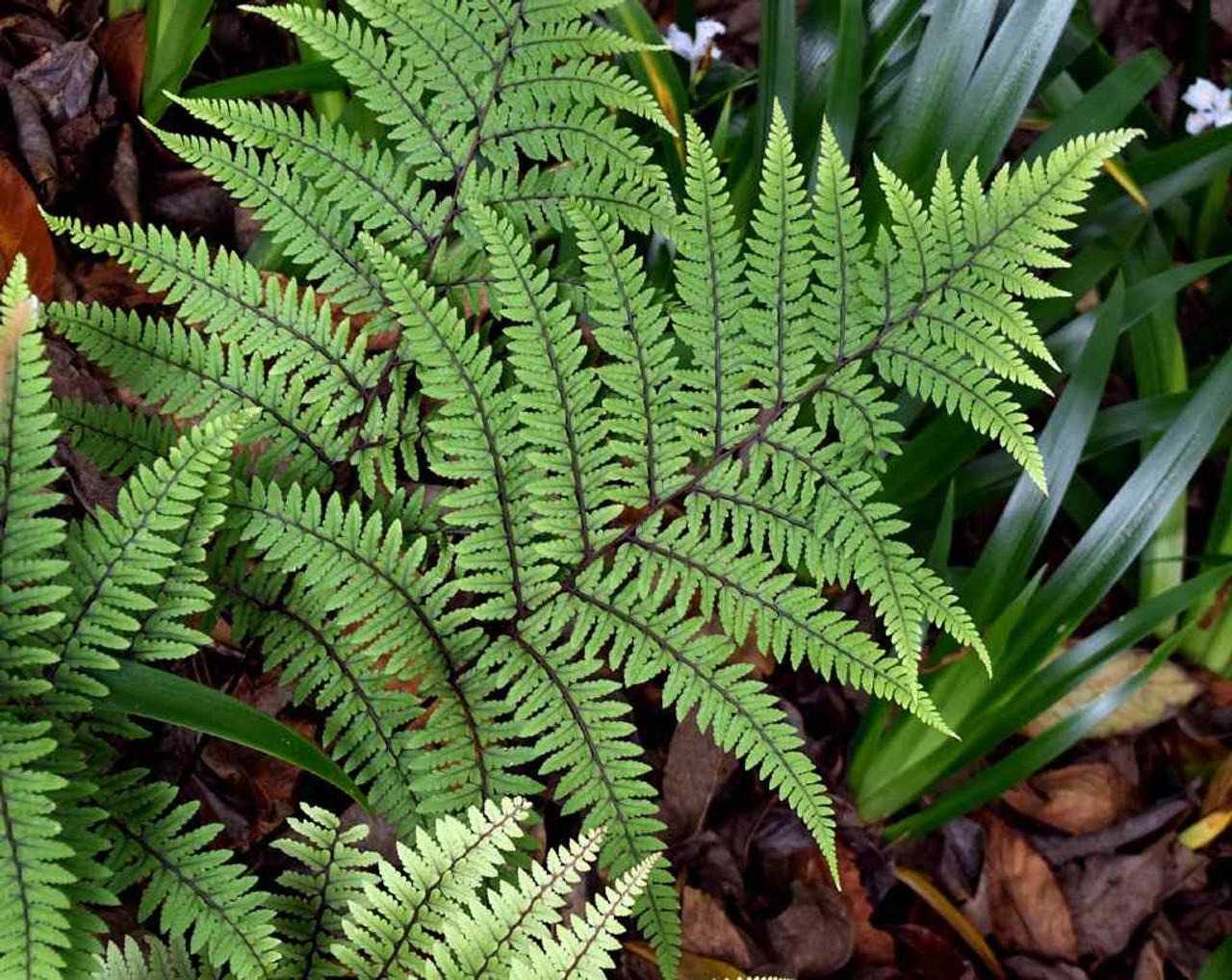Product Description
Garden fern with pale gray-green leaves with darker veins. Very finely-divided leaves.
For moist soil.
Award of Garden Merit by RHS (Royal Horticultural Society, Britain)
Blooming Time: not blooming
Size: usually 1-1.5' tall and wide, stays in clumps (in ideal conditions 2' x 2')
USDA Zones: 5 to 9
Culture: half shade, dappled shade, full shade, average garden amended with some organic matter (composted leaves, mulch, compost). Medium-moist to moist soil. Soil shouldn't dry out - leaves may scorch. Adaptable to soil types, but prefers slightly acidic to neutral soils.
Moisture Needs: Likes some moisture, the best is evenly moist soil. Medium, medium-moist, moist, but avoid waterlogged soils.
Origin: Japan, East Asia
Deer/Rabbit Resistant: yes / yes
Attracts Butterflies or Pollinators: no
Attracts Hummingbirds: no
Plant combinations: Best in half shade to shade beds, in shaded parts of rain gardens, woodland edges, close to water features in the shade, shaded parts of rock gardens. Good companions can be spring ephmerals like Claytonia, Delphinium tricorne, Jeffersonia, Mertensia, Trillium. Or plants like Actaea (Cumicifuga), Aruncus, Asarum, Bergenia, Brunnera, Dicentra, Epimedium, Geranium maculatum (other common hardy Geraniums,) Helleborus, Heuchera and Heucherella, Hosta, Meehania cordata, Penstemon calycosus, Persicaria amplexicaulis, Podophylum, Polygonatum, Phlox divaricata, Phlox stolonifera, Primula, Scutellaria, Tiarella, Tradescantia, Uvularia, Viola, Waldsteinia and grasses like Carex (sedges) or Hakonechloa macra.
Pot Size: square 3.5" x 4" deep perennial pot
Picture copyright: Krzysztof Golik, Commons Wikipedia





